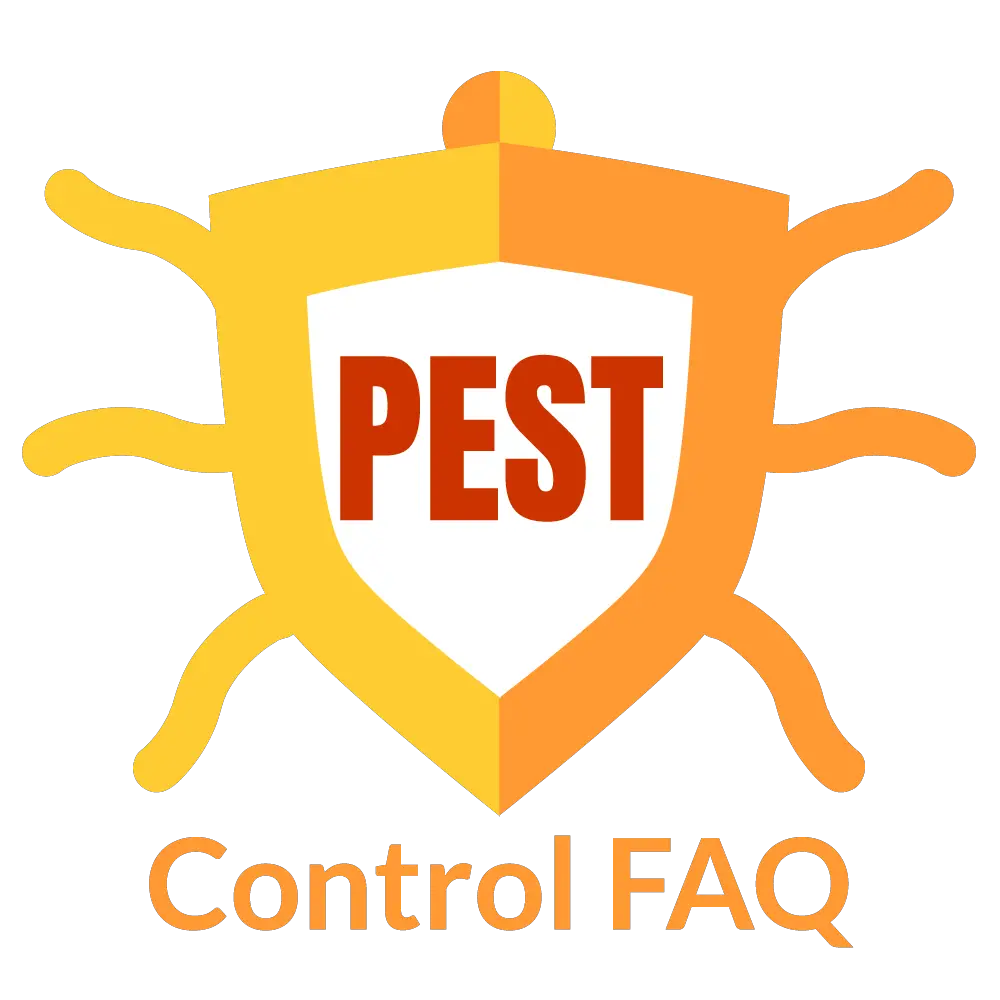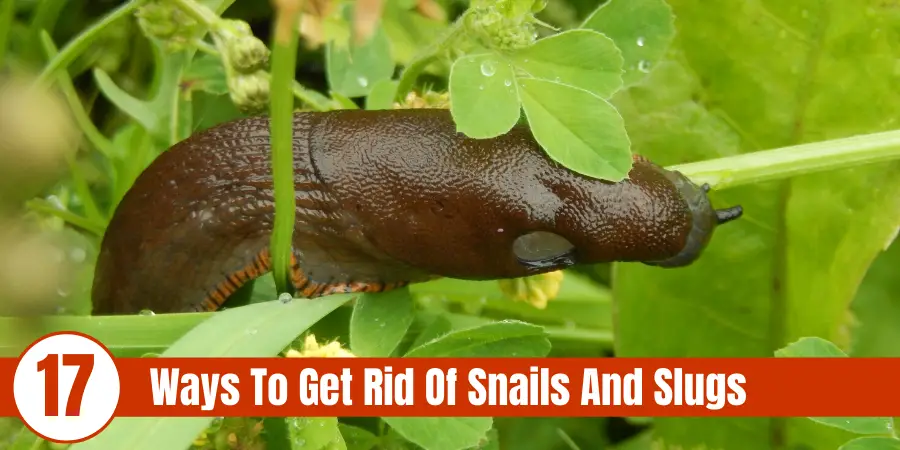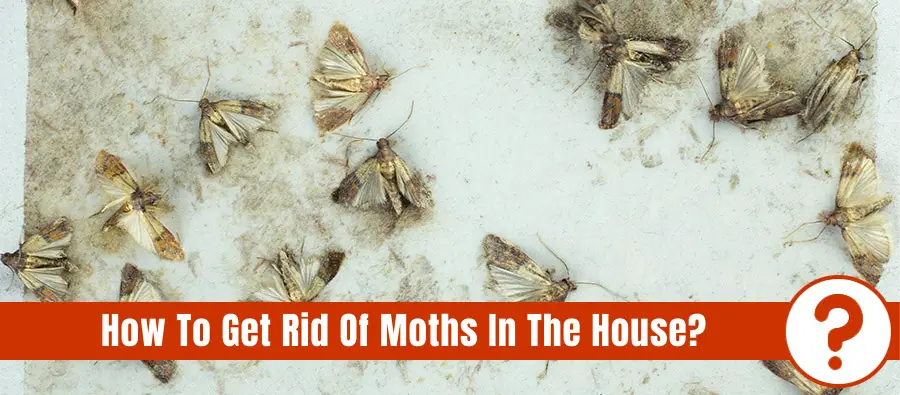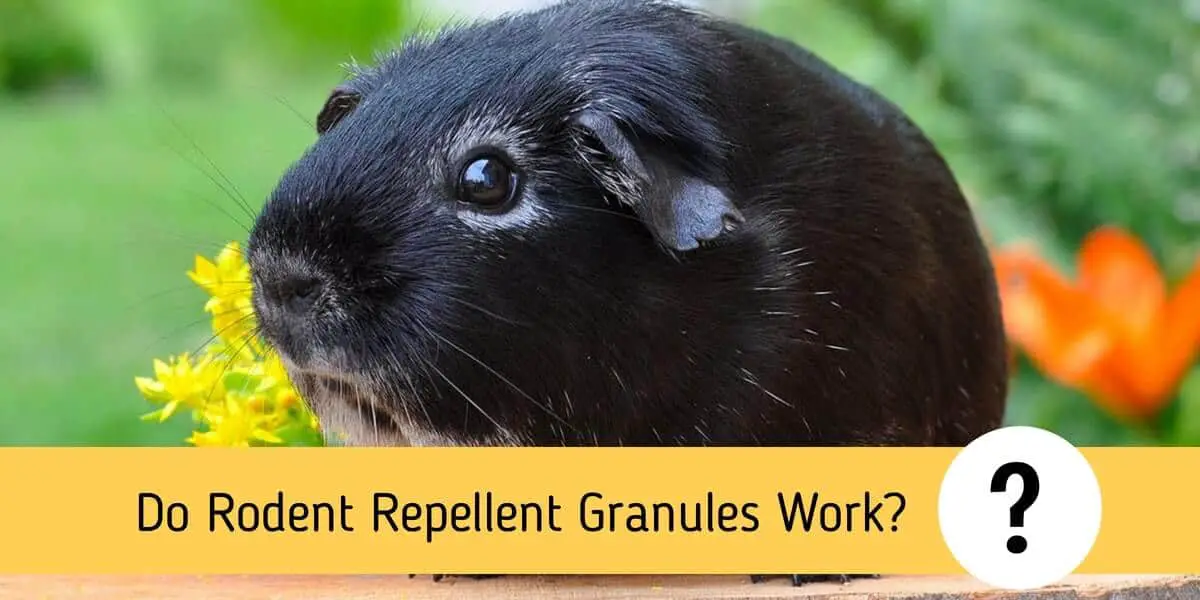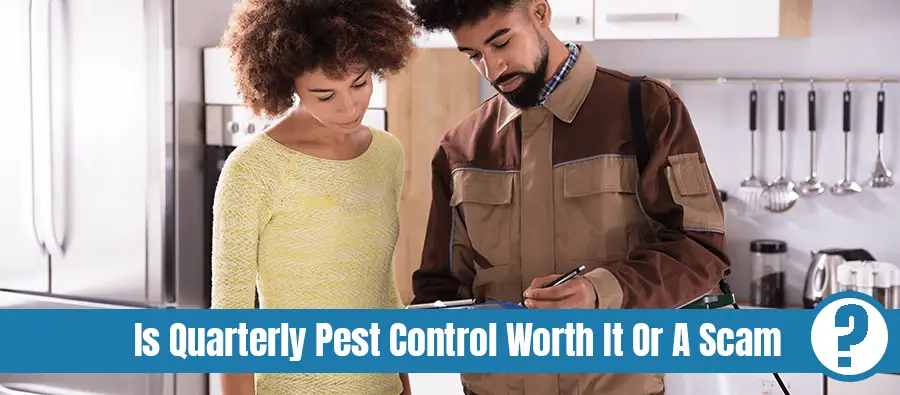Snails and slugs are fascinating to learn about in a biology class or interesting to observe from afar. Put them in your garden though, and they become more of an annoying nuisance than a fun and unique creature.
To help you deal with them accordingly, here are 17 different helpful ways to get rid of these snails and slugs. Some of the remedies can be found for a low cost or already located right in your kitchen. Check out how you can get these snails and slugs removed, so you no longer have to worry about your garden being eaten alive.
Table of Contents
Removing snails and slugs From Your Garden
Nobody likes to deal with snails and slugs eating the plants in their garden before they get a chance to see or eat them themselves. Most people try to rid their gardens of these slimy snails and slugs by buying expensive products containing chemicals that can harm not only the snails and slugs but you and your family members as well.
Luckily, you won’t have to resort to that strategy. Here are 15 natural ingredients and tricks you can use to easily get rid of snails and slugs.
1. Coffee
I’m a coffee addict myself, so I love using any excuse I can to explain why I have so much coffee in my kitchen. Luckily, this can be another one. Snails and slugs don’t share my coffee addiction, so they crawl away the minute you sprinkle coffee grounds around your plants. It isn’t just grounds that make them scurry away.
Here are the different forms of coffee that repel snails and slugs:
- Fresh coffee grounds
- Coffee at a cold temperature
- Coffee grounds that have been used
You can either sprinkle these grounds around the specific plants that these creatures are known to chomp on, or you can sprinkle it along the border area around the garden. Either way, when these snails and slugs catch one whiff of the caffeine, they’ll immediately crawl the other direction.
As if keeping the snails and slugs away weren’t enough, adding coffee grounds to the soil in your garden is actually extremely helpful and nutritional for it.
2. Beer
Another popular beverage that helps get rid of these snails and slugs is beer, specifically, flat beer. Follow the below steps to properly feed this to your unwelcomed friends and create a handy trap for them to fall into.
- Grab a beer and leave it out until it has become flat and stale
- Retrieve an empty container or bottle that can easily hold the contents of the beer
- Bury it somewhere in your garden deep enough that the rim is situated on the same level of the ground
- Pour this stale beer into the buried bottle or container
- This lingering scent of the beer will lure the snails and slugs to the bottle, falling right into your trap and out of your hair.
The snails and slugs will quickly and easily be killed by this trap from drowning. So be prepared to get rid of the deceased creatures after a few days. You should be able to keep attracting several different snails and slugs all at once. So, if you have a big slug infestation problem, this could be one of the best solutions for you to try out.
3. Vinegar
This strongly scented ingredient is known to create the perfect recipe to rid snails and slugs from your garden. All you need to do is follow three simple steps:
- Find an empty spray bottle
- Mix water and vinegar inside of the spray bottle
- Head out to the garden at the time that you know these unwelcomed friends are attacking
- Spray every single one of those pests
Vinegar is known to be fairly acidic. Because of this, the minute it comes in contact with any type of slug or snail, it will kill them quickly. Be careful while spraying, though. If you see these creatures crawling along on your plants, don’t spray them.
Snails and slugs aren’t the only ones who can die when touched by these acidic ingredients. Your plants can also be killed the second vinegar touches them. Refrain from spraying any of this mixture on your plants to keep them healthy and alive.
4. Cornmeal
Snails and slugs absolutely adore cornmeal. Lucky for you, it can be used in a sneaky and clever way to get them killed and removed from your garden. Follow these steps below to properly use cornmeal in order to properly kill the snails and slugs.
- Grab cornmeal from your kitchen
- Find a jar and put the cornmeal inside of it
- Lay the cornmeal-filled jar on its side
- The snails and slugs will enter the jar, take bites of the food, then leave
When you see the snails and slugs eat this cornmeal, then leave, it can make you think all you did was feed them a delicious meal. All hope is not lost, though. The slugs will eventually die from the ingredients inside of the cornmeal shortly after they have crawled away.
If cornmeal is not readily available you can use bran as a substitute.
5. Ammonia
A mixture of ammonia and water can also be effective in the fight against snails and slugs. Just grab some ammonia and water, then mix them up in a spray bottle. You have now created a mixture that will be ready to attack these unwanted plant-eaters.
Take this mixture outside and spray on every snail or slug you see. Once again, this is another ingredient that is acidic. It can easily kill snails and slugs, but unfortunately also has the power to kill your plants as well. Watch out and be careful where you aim your spray bottle.
6. Garlic
Vampires aren’t the only creatures garlic has been known to scare off. By mixing this up with water in a spray bottle, you’ll have the power to get those snails and slugs off your plants once and for all.
The best time to spray these visitors is at night when they are crawling around basking in the deliciousness of your plants and flowers. Garlic is known to be one of the simplest, most effective, and most natural ways to kill snails and slugs. They will either die as soon as this mixture hits them, or soon after they crawl away into a different hidden area.
Either way, you’ll soon be finding yourself free of snails and slugs.
7. A Piece Of Wood
There are several different possible ways to use a simple piece of would to kill a slug or snail. Follow the below steps to use one of the possible methods in killing these creatures off:
- Grab a small piece of wood or even a plank
- Run it underneath the water, so it’s fairly wet and damp
- Place it next to the slug and snails’ favorite hangout spot in the garden
- The next day, head back out to your garden and revisit the area you left your wooden piece
- You should see several different slugs, snails and possibly other crawly friends exploring different parts of this wood piece
It’s a known fact that snails and slugs love damp areas, especially damp areas that are also dark. This is why it’s the most ideal to set up this wood piece trap at night. That’s when you’ll attract the most snails and slugs.
8. Wood Ash
There is another creatively clever way to make these pests disappear. Sprinkle wood ash on either your plants directly or the outside perimeter of your garden. Similar to coffee grounds, wood ash is known to be good for your garden’s soil. So, not only are you repelling these pests you are also helping your plants.
The reason why wood ash is so bad for snails and slugs is that it dehydrates them. Unfortunately, snails and slugs aren’t the only living things it’s been known to dehydrate.
Though you are allowed to let wood ash come into contact with plants, especially to kill snails and slugs, try not to sprinkle too much ash on the plants. Too much of this could kill them just as easily as the crawly critters.
9. Wooden Skewer
Next time you enjoy a fun evening of grilling out with friends and eating shish-ka-bobs, try to save these skewers. They will be perfect for getting rid of the snails and slugs that need to be out of your garden. Grab the skewer and poke the slugs or snails in the chest.
This method is only for those that are okay with being a little violent with these creatures. This is also a lot more effective if you’re only dealing with one or two of these critters in your garden. If your garden has several different snails and slugs roaming about, then it won’t be easy to impale several different slugs all at once.
10. Water Plants in the Morning
Snails and slugs are known to crawl around and eat different plants throughout your garden, mainly in the nighttime, as there isn’t much around to disturb them while they munch. One thing they don’t like is soil that is too dry for them to efficiently move and crawl around on. This is another reason why they would rather indulge in midnight snacking since the soil won’t be as hot and dry.
To prevent them from enjoying the soil at night so much, water your plants in the morning. This way, by the time nighttime hits, the soil will be more dried out. This will make it less desirable for them to crawl around on. Rather than waiting to eat your plants in the morning, they will simply give up and inch their way on out of the garden.
11. Egg Shells
Never sure what to do with those leftover eggshells other than throwing them away? Well, now you have another use for them. You can easily break these eggshells up and then start to spread tiny pieces of the shells throughout your garden. The shells are extra pointy and sharp to little creatures like snails and slugs.
Rather than having to dodge and weave the sharp edges, snails would rather avoid the risk of getting poked by these shells altogether. So, they will just slither away and find a new place to provide them with their nightly meals.
This method is known to be the most effective if you know exactly where these little creatures like to meet for their dinnertime. If they are known to crawl around all different areas of the garden rather than all migrating to one place, then this may be a little difficult.
You’ll end up spending an excessive amount of time spreading eggshells throughout your whole entire garden. You also won’t have to worry about this method being dangerous or harmful to your soil. Eggs are known to naturally decompose into the soil. You won’t have to worry about cleaning them up or damaging the plants.
12. Just Pick Them Up
This one is just as simple as it looks. If crawly critters like these don’t gross you out, then don’t hesitate to get on in there and remove these creatures with your hands. If you have one or two snails or slugs starting to crawl around and get settled in your home, this is the best time to do this.
Stop them from making your garden a home and inviting their friends simply by picking them up and moving them to another location outside of your garden. Some people have found this to be effective as the snails and slugs never returned. For others, though, picking them up wasn’t quite good enough as they still seemed to crawl right back into their garden and the owners’ lives.
It’s especially not effective to perform this method if a large number of snails and slugs have gathered in your garden all at once. At this point, it’s too late to remove them by hand since there are so many.
It will be time-consuming for you to pick them all up to move them as well as pointless since they’ll all travel in packs right back to the garden together. To make it easier, wait till night time to head out there and inspect the critters on your leaves. This is the best time to remove them if there aren’t too many.
13. Diatomaceous Earth
Diatomaceous Earth is a powder that’s completely natural and extremely useful when it comes to ridding your garden of certain pests like snails and slugs.
It’s made of algae remains that have eventually been made into fossils. This specific algae type is known as a diatom. Even though it looks and feels exactly like a powder, and that’s what we refer to it as it’s actually more of a rock since it’s fossilized. This means that the edges of this powder are actually very pointy and harmful to the bodies of snails and slugs when they touch.
Head out at night with your flashlight to learn where these snails and slugs like to hang around the most with each other. Then sprinkle this powder right on top of them. The ingredients inside of this powder will easily poison and hurt their bodies, resulting in their death.
Try not to pour too much of it directly on top of your plants. Like many of these other natural concoctions used to kill snails and slugs, it can also be harmful to plants. Since it contains ingredients strong enough to kill these living beings, it only makes sense that it’d be strong enough to kill plants as well.
If you purchase specific food-grade diatomaceous earth products, you’ll have a smaller chance of killing plants. Many people decide against doing this though, as it’s known to be a lot more expensive.
14. Copper
You’re probably very well aware that snails and slugs have extremely slimy bodies. Because they’re so slimy, their bodies are sensitive to certain things that come in contact with them.
One of those specific objects is copper. When a snail or slug comes in contact with anything made of copper, it will immediately feel a sudden shock throughout their body.
Naturally, they will try their best to retreat and get as far away as possible from whatever it is that’s causing them this pain. Chomping down on the leaves and plants inside of your garden will no longer be worth the harmful and uncomfortable feeling they are getting from copper.
The type of copper you can get that will work best on these slugs is a specific type of copper adhesive tape. You can find it in the following establishments:
- Garden centers
- Popular home improvement stores
If you’re using tape to ward off these crawlers, just line the tape along the outside of your garden. This will keep them from entering your garden at all. Try to do this when you first begin planting your garden to keep them out from the start.
If you line the tape up on the outer edge of your garden when the snails and slugs are already located there, they will feel trapped and won’t leave.
Pennies are another copper option. Do the same with these pennies as you’d do with the copper tape. Even better, glue the pennies to the bed of the garden in order to keep them from getting moved somehow. To provide more of an effective wall to keep slugs out, glue the pennies together, so they’re all touching.
If you leave any type of space in between any pennies, it would leave plenty of room for the snails and slugs to slither right on through the cracks.
Different copper bands can also easily be wrapped around the edges of your plants to keep snails and slugs from crawling around and up to them for a snack.
15. Citrus Peels
Next time you eat any citrus foods that contain peels, don’t throw them out. These are known to be an effective method of keeping snails and slugs off your garden plants. Take your leftover peel collection and scatter it all around your garden before the snails and slugs gather for their nightly meetup and feast.
They will get excited to indulge in new food, so they will crawl over to these peels to eat them. From there, you’ll see several different snails and slugs spending time on the peels. Grab either the snails and slugs themselves or peels and move them to a different area.
This method also works on cabbage leaves as snails and slugs love to munch on this type of food as well. You can even bring a half-eaten melon out to the garden for these bugs to begin digging into.
16. Epsom Salts
Head to your kitchen and gather your various Epsom salts then bring them out to the garden. Even regular cooking and tasting salt would work in this instance as well. It works to make snails and slugs disappear. This salt is known to be good for the soil, but in a way, it can also be harmful to the soil as well. Make sure you’re paying attention to this before applying the Epsom salts.
This is due to the fact that Epsom salt contains a lot of sulfur and magnesium. Sometimes soil doesn’t have enough of this, so then it would be helpful to add Epsom salt to the soil. In the case that the soil has plenty of magnesium and sulfur already inside it, it can cause an imbalance in the soil. Be careful using Epsom salts, and try not to use too much of it.
17. Dog Or Cat Food
Even though dog and cat food may be okay for them to eat, it can be toxic for others. There is a specific method you can use in order to properly keep snails and slugs out of your garden. Check out the steps below:
- Retrieve a pie plate made of tinfoil
- Cut several different openings up and down the rim of this plate- you’ll want these holes to be large enough that a snail could fit through it
- Pour out a pile of cat or dog food
- Place this plate on top of the pet food pile
As we’ve learned earlier, snails and slugs love dark spaces to hide. By finding the plate, they’ll think they have found their new and impressive hiding spot. They will then begin to eat the dog or cat food and won’t leave for a while as they just found the perfect spot with food. Head out there in the morning to collect this plate with newly gathered snails and slugs on it.
How Do Snails and Slugs Damage Gardens?
When first hearing about snails and slugs invading gardens, it’s hard to believe they can actually be harmful. They are small, slow creatures, that don’t seem to appear in large numbers, but snails and slugs have giant appetites. They love to eat and will eat almost everything.
Snails and slugs see gardens as opportunities to eat a variety of veggies and other plants in large quantities. The way to tell if a slug or snail is present is by noticing the different types of holes you’ll be able to easily see in different plants in the garden.
All of the shapes of these holes will look weird and misshapen. This is because snails and slugs have mouths that aren’t normal sizes, so their bite will look unnatural as well. Below are a few of their favorite types of garden grown foods that they love to feast on:
- Cabbage
- Beans
- Tomatoes
- Lettuce
If you’re growing any of these plants in your garden, prepare for snails and slugs. Take different precautions like those mentioned above, to make sure they will have no desire to eat anything in or around your garden.
If they get into your garden and eat the leaves of whatever plant you have growing, that plant will most likely begin to die. If they eat the garden produce itself, then it halts the growth of that plant and possibly of others around it.
These annoying critters crawling into your garden to destroy it and eat your food can be annoying and inconveniencing. Luckily, there are several different ways for you to get these snails and slugs out without risking harm or damage to your plant. Be sure to use the above methods exactly as described to make sure you’re doing whatever it takes to keep the critters out of your garden.
